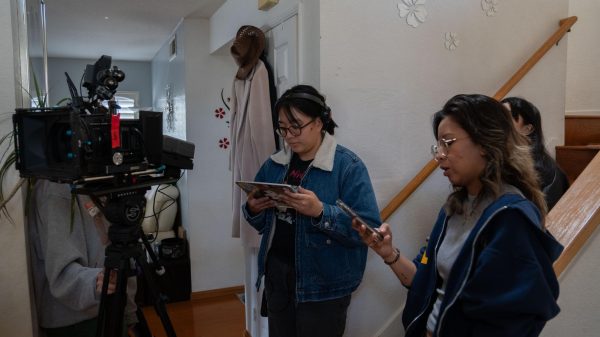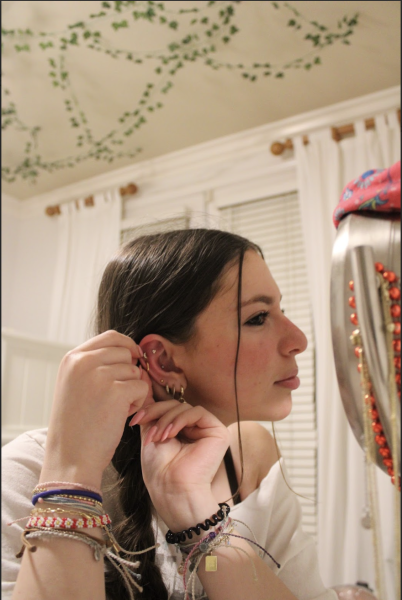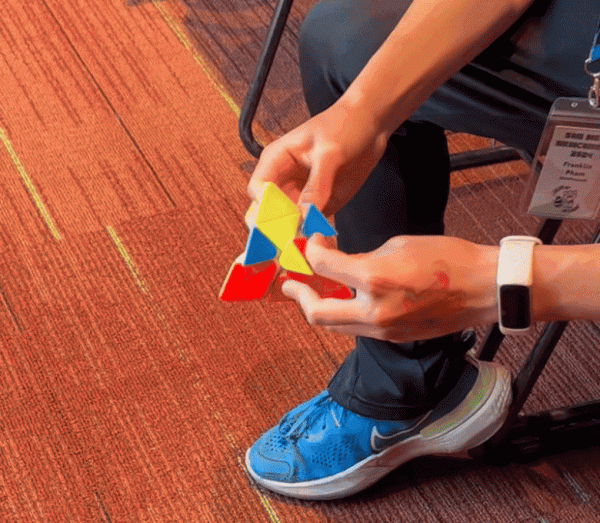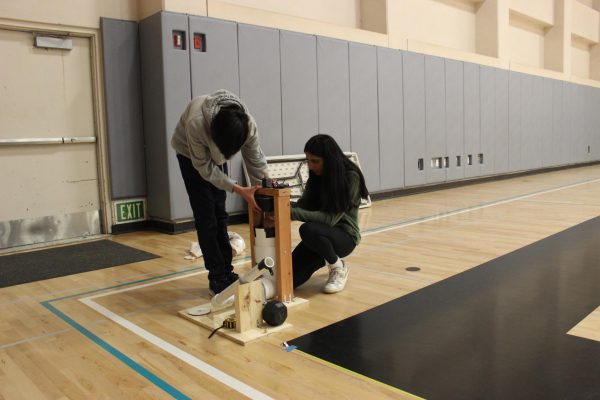Students with ADHD develop strategies for learning online
March 11, 2021
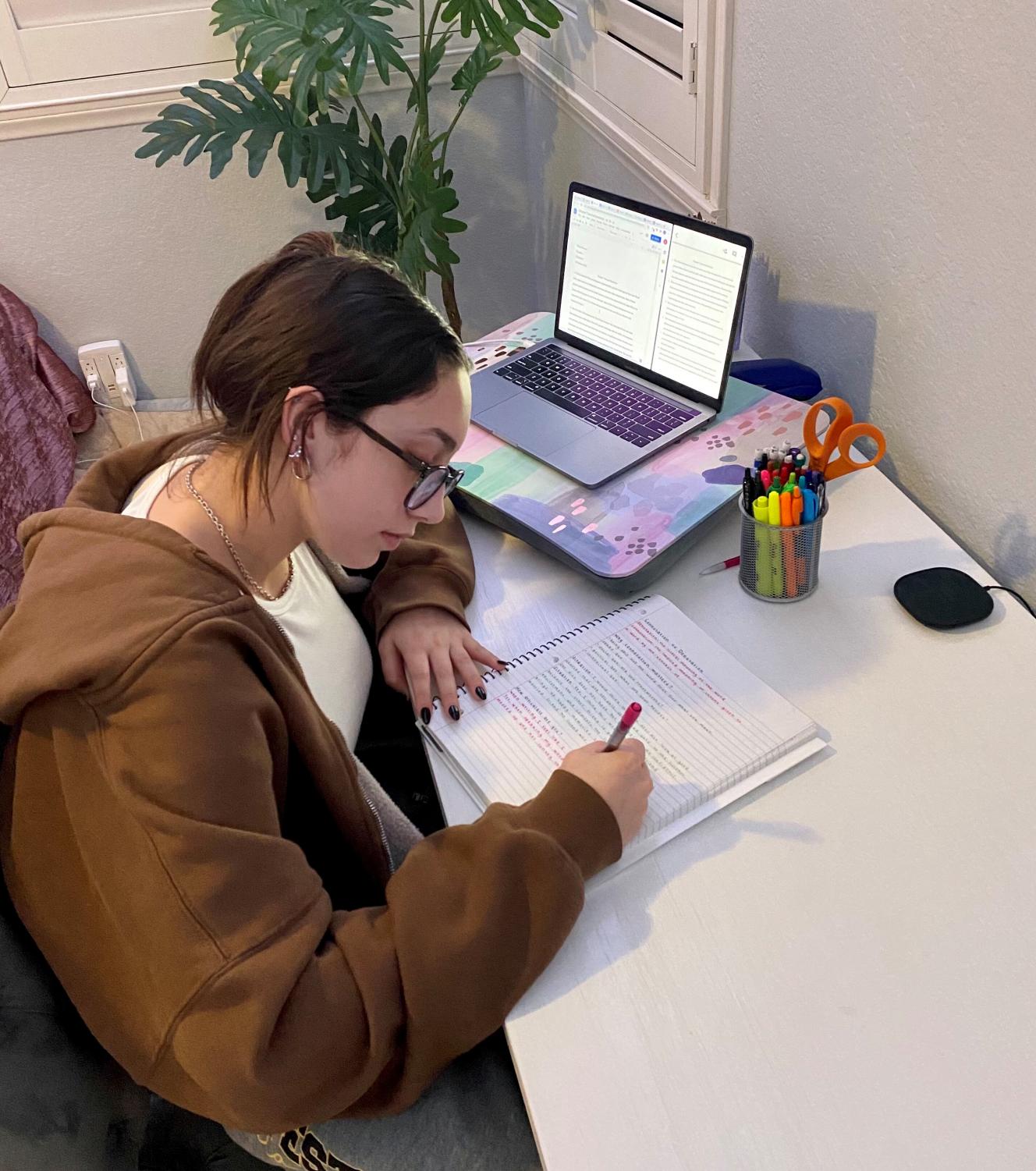
Olivia Dawson (11) stared down at her math test and counted all the questions she had yet to answer. Looking up at the clock, she calculated how much time it would take to complete the problem at hand. But after she completed her calculations, she consumed more of her time as she attempted to refocus her attention onto her paper. This cycle repeated itself for every problem she encountered, causing her to run out of time and submit an incomplete test.
Dawson was diagnosed with ADHD in 5th grade. In middle school, she developed this habit of losing focus on the task at hand and gravitating her attention towards the clock, often during math class.
“The reason why I look at the clock is because I get anxious with how much time I have left,” Dawson said. “And by looking at the clock, I would get really distracted. I couldn’t start my next math problem until the second and minute hands on the clock would hit the same mark. I would see how many seconds it would take for the second hand to hit the minute hand and then put myself under a time crunch, putting a restriction on how many times the hands could hit each other for one problem on my test.”
After years of working on ways to improve her focus, Dawson said she feels as though it has become much more difficult to stay focused in the at-home learning environment––even with medication––saying that she feels no difference whether or not she takes her medicine that day.
“I’ll be trying to focus on my screen but then I will see my bed had not been made so I will get up to make my bed and then I’ll have clothes on the floor so I would pick them up and then I’ll miss the notes being taken,” Dawson said. “I usually tilt my camera up because I feel like I need to clean my room to feel good enough to start the day. I have my camera on in all my classes because the teachers will take off participation points if I don’t have it on but having my camera on makes focusing harder because I worry about how the camera is angled or what part of my room is showing.”
The distractions in her room are not the only obstacles Dawson faces. She also feels as though her mind has to readjust to associate school and work with home rather than the school campus.
“I think the environment in school felt much more strict compared to at home so I feel less forced to focus [at home],” Dawson said. “The second I would walk onto campus, there would be a switch in my brain that would allow me to hyper-focus on work. My mind correlated the shift of people and the school environment to work mode.”
The struggle to balance work and home life has affected many students. According to Westview counselor Christine Cudmore, ADHD makes this adjustment much more difficult.
“It can be more difficult to focus and complete tasks in a timely manner, be more distracted by things in their environment, or have a hard time sitting for long periods of time, which can impact their academics,” Cudmore said.
Hailey Giles (12), diagnosed with ADHD, has experienced similar difficulties adapting to work at home.
“I’ve created in my head that school was where I did work and home was where I relax,” Giles said. “At school, it was a lot easier for me to take a test or do work because my mindset is just completely different.”
In the current conditions of online school, both Dawson and Giles said they struggle to fully comprehend and retain the material from their classes due to their association of Westview’s campus with learning.
Dawson and Giles have needed more test time extensions as a result of new distractions keeping them from focusing as well as they used to. Because of their ADHD diagnosis, they receive accommodations on tests and assignments. These accommodations could include extended due dates and test times, separate seating during tests when in person, and a special class dedicated to completing work. Yet, the system of online learning lacks many elements of on-campus school that assist them with academic success.
One of the major factors, they say, that kept them on track while at school was the physical presence of a teacher. Giles said the new online environment acts as an obstacle for her, considering the bigger disconnection between student and teacher.
“Most of the time, you’re almost basically teaching yourself in a way because you don’t have a teacher there at all times,” Giles said. “For me, constantly having a teacher there was amazing because I would always be asking them questions. But online, it’s just not the same as to when [the teacher is] there in person and physically present, helping you.”
With the presence of a teacher, they could receive help whenever they needed and were held accountable to stay on task during work time.
“In person, I would still get distracted but because I had my teacher in the same room as me and because I would normally be seated in the front of the class [as an accommodation from my 504], I could stay focused, but now that I’m staying at home, it feels as though I’m lost in a pool of students,” Dawson said.
Due to the lack of physical presence of a teacher, the in-person connections Dawson was once able to develop with her teachers on campus have disappeared, leaving her feeling lost and hesitant to approach them.
“I’m still really scared to say anything to my teacher, like ask for help or ask for more time on a test, because I feel like they don’t know me or my circumstances that well compared to in-person where they knew the way I took tests,” Dawson said. “I’ll ask my teachers if I can have 15 more minutes on a test but then they will respond saying that I could email them or to tell them ahead of time but I don’t know if I will need more time before the test. I don’t want to bombard my teachers with emails in case I won’t need it for that day. [Before], I could go in after school and have a nice one-on-one conversation, but now, it feels a lot less personal.”
She said that the biggest struggle she encounters is overcoming the misconception that having ADHD is not a big deal as it is so normalized. Her experience with this only worsened online.
“There’s a stigma around ADHD where people think everyone has it,” Dawson said. “If I need to ask for accommodations, I hesitate because I don’t feel valid. I don’t want them to think I’m making excuses. I’ve been granted [my accommodations] by doctors and counselors but I still don’t want the teachers to think I’m faking it.”
The difficulty of connecting with her teachers is not the only obstacle Dawson encounters. When students are in a classroom setting, the teacher often provides visuals to go along with their lesson, using presentations, the white board or other visual aids. These components help make teachers’ daily lessons engaging for her. The transition to online school has raised the difficulty for Dawson, she said, who is a visual learner, due to the losses of the visual aspects in her classes. Dawson said she feels as though the verbal lessons are akin to background noises: they go in one ear and out the other.
“It’s honestly exactly like Charlie Brown,” Dawson said. “It’s almost as if it is reflecting off of me and I just can’t hear anything. It doesn’t make sense.”
Dawson said she has been zoning out during class more often as the year has progressed. Though she tries her best to refocus, she ends up staring at an object and ignoring everything else, visually and audibly.
“Normally when I zone out, I’m thinking of nothing or a million other things,” Dawson said. “My ears will get muffled almost and all sound is blocked out. I will stare at something and everything else gets blurry.”
Dissociation is a common symptom of ADHD. According to Cudmore, there are various subcategories of ADHD with different symptoms for each type.
“There’s an inattentive subtype where individuals have a hard time staying focused, the hyperactive subtype where individuals have more energy, and the combined subtype where students have both hyperactive and inattentive characteristics,” Cudmore said.
Dawson says that she belongs to the subtype that has both hyperactive and inattentive characteristics and tends to dissociate when she gets overwhelmed with work. She said she believes it is a combination of her ADHD and anxiety, another one of Dawson’s diagnosed conditions, that makes her zone out in order to calm down from stress.
Despite dissociating in order to deal with stress, Dawson said she feels like whenever she is in a quieter environment, she is unable to focus on anything.
“ADHD comes in waves, so sometimes I can’t focus and other times I hyper-focus, meaning that I can listen to music, have the TV on, and be writing my essay,” Dawson said. “But when it is quieter, at times I feel as though I’m just going through the motions of the day, not really focusing on anything.”
On the other hand, Giles said she needs to block any noise out from her environment to be able to productively work.
“I have to be in complete silence, so no noise can come into my room when I’m doing homework because then I’ll get distracted,” Giles said. “I need my brain to focus on what I’m doing and if it is interrupted in any way, it messes everything up.”
The many changes that online school has presented have made it harder for Dawson and Giles to adjust. It is a challenge to control their “school” environment in order to effectively learn, but Dawson has found tricks to help her achieve the atmosphere that is the most accommodating to her ADHD.
While the online environment offers students a chance to use their computers as a more efficient tool for taking notes or completing assignments, Dawson has found it to be more beneficial to stick to a pen and paper.
“[By doing this] I’m forced to only focus on the pen and paper,” Dawson said. “I can tune out everything else because I’m not distracted by seeing a notification pop up on my computer or try to change the font when writing notes online.”
Dawson also has been diagnosed with OCD, which, in combination with her anxiety and ADHD, forces her to strictly perform activities in a certain manner or else she can get nothing done.
“I have to organize things in a particular way and I have to have all my notes the same way,” Dawson said. “If I have my workspace organized in the same way all the time, I get less distracted because there isn’t anything new to distract me.”
Another method Dawson uses to soothe her racing thoughts and hyper-focus on the task at hand is to allow her room to be filled with any kind of background noise.
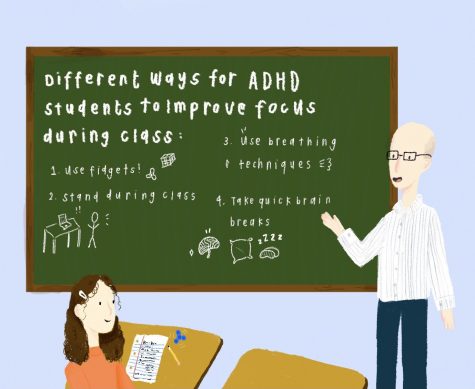
“I always work with my windows open to hear outside noise, whether it is to hear people talking or cars passing by,” Dawson said. “It makes me feel like I’m not in a box, that I’m not just alone and it’s quiet.”
According to Cudmore, students with ADHD may be out of their normal routine and have to adjust to new strategies and coping mechanisms to help them focus on their academic work. She and the other counselors offer a few suggestions for ADHD students to help with focusing during the school day.
“It can be helpful for everyone to monitor how you are feeling,” Cudmore said, “Students can use fidgets, stand during class, use breathing techniques, and take quick brain breaks.”
Despite the various challenges Dawson has faced with the new online school routine, she said she is grateful for the knowledge that this change has brought her.
“I feel like [opening my windows to hear outside noise] is something I never did before and that is why I think I had a really hard time doing homework when we were in person,” Dawson said. “I guess [learning what makes a good working environment at home] is one good thing because I know what I need now [to focus]. So when we do return back to school, I’ll be thankful for this experience.”




